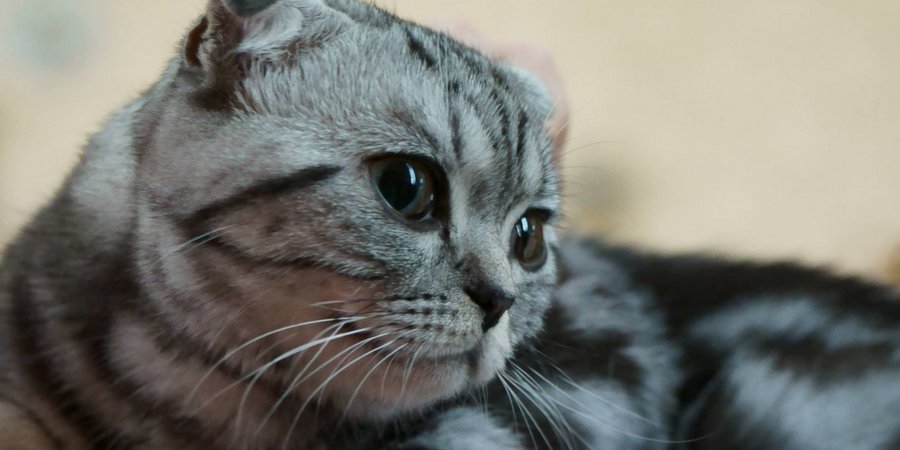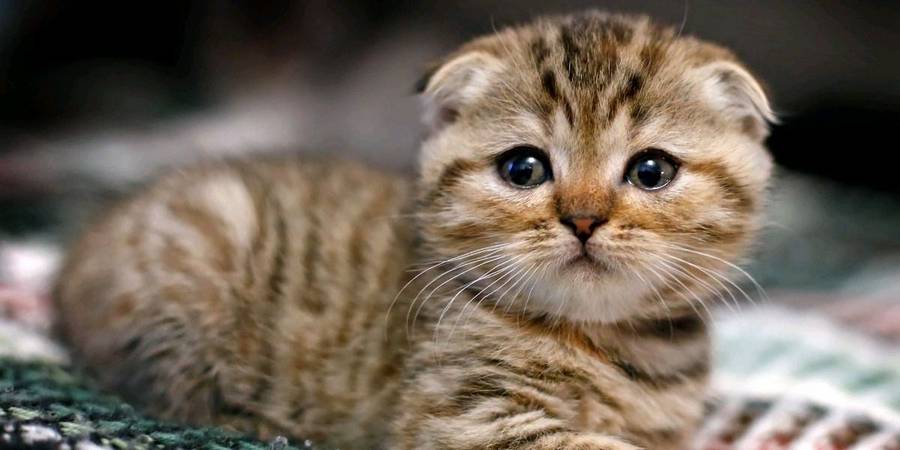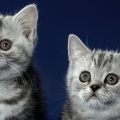Scottish Fold cats have perhaps the most recognizable appearance, thanks to their forward sloping ears, round eyes and baby-face. So what else do we know about this cat breed? Turns out, there are some interesting facts that will be of interest to future owners or just fans.

- 1. The folded ears are caused by a genetic mutation
- 2. Folded gen may cause health problems
- 3. Scottish Fold kittens are born with straight ears
- 4. The Scottish Fold breed began with a barn cat known as Susie
- 5. Scottish Folds cat breed initially had a different name
- 6. Scottish Folds are available in different patterns and colors
- 7. Scottish Folds don’t fit in Europe
- 8. Scottish Fold cats are very popular in the US
- 9. Scottish Folds are renowned for their unique positions
- 10. Scottish Folds are pop culture fixtures
1. The folded ears are caused by a genetic mutation
In addition to its big eyes, wide-spaced and round body, the Scottish Fold’s distinctive characteristic is the ears. They turn upwards to “fold” closely over the cat’s head. This characteristic frequently leads individuals to draw comparisons between the cat’s appearance to that of an owl, or the appearance of a Teddy bear. The cause is an incomplete dominant gene which resulted from a mutation that occurred spontaneously. The cartilage is affected in the body of the cat. Although it is true that the Scottish Fold’s ears may be the most obvious evidence of this condition but the rest of the body is also affected.
2. Folded gen may cause health problems
Varying degrees of osteochondrodysplasia may arise. In the most severe instances, it may cause arthritis, Fusing of the tail the knees, ankles and ankles and limbs that are not properly shaped and an unnatural position and walking. To avoid deformities breeders cross Scotland Folds and straight-eared cats similar to British shorthairs or american.

3. Scottish Fold kittens are born with straight ears
They don’t acquire their signature appearance until around two to four weeks old when their ears are beginning to fold. Geneticists have come to the conclusion that when mating, one of the parents must be a Scottish Fold and the other a Scottish Straight. In this case, the risk of dysplasia is significantly reduced. However the CFA and other cat lover associations will only allow cats with fully folded ear flaps to participate in shows. Particularly prized are Scottish Folds with 3 folds on the ears. The Scottish Folds ears were not as wrinkled as they are today. The ears were folded about halfway up, and then tilted up and forward. A long history of selective breeding is the reason for the triple or double folds in the ear of Scottish modern Folds, which causes their ears to lay completely flat.
4. The Scottish Fold breed began with a barn cat known as Susie
In the year 1961, a white cat Susie with a wacky fold in her ears was discovered at an animal farm in Perthshire, Scotland. She later gave birth two kittens who shared the same characteristics. William Ross, a local farmer and cat lover adopted one of the unusual kittens, and in the year 1966 when he was a farmer, he registered the breed with the Great Britain’s Governing Council of Cat Fancy (GCCF). Ross along with the geneticist Pat Turner began breeding the Scottish Fold, and three years later, they had 76 kittens, 42 of which had flat ears while 34 were ear-shaped. In the course of time the cats were crossed with British Shorthairs as well as other breeds to create the adorable, round-faced cat that we all know and love. Today today, all Scottish Fold cats can trace their roots all the way to Susie.
5. Scottish Folds cat breed initially had a different name
Because these cats had something of the appearance of lop-eared rabbits, they were first called “lop-eared”. However, when the breed was registered, it was given the official name “Scottish Fold” to avoid any confusion.

6. Scottish Folds are available in different patterns and colors
You might be wondered of Scottish Fold colors and patterns, from black, blue and red, as well as shaded silver, lilac or tabby. The Scottish Fold’s eyes could be any color, but they’re usually copper. Gold and chinchilla colors are very highly valued, and of the patterns is tortoiseshell.
7. Scottish Folds don’t fit in Europe
The GCCF, the U.K.’s largest registration agency for cats, initially accepted Scottish Folds as a show in the year 1966. But by the year 1971, the organization was no longer allowing pet owners to apply for registrations of their kitties as they were concerned about physical imperfections or ear mites as well as infections and hearing loss. The fears were ultimately unfounded, but until today, these breed is less popular in Europe as some others.
8. Scottish Fold cats are very popular in the US
1970 is considered the birth year of the Scottish Fold breed in the USA. Neil Todd, a New England scientist who researched the genetic mutations that occur in cats, got a number of such kittens. Todd completed his research, thanks to which we now see champions descended from Cattish Fold kittens born under his care. In 1977 the Scottish Folds received an interim status within the CFA In the following years, they’ve grown into a desired kitty in America. Cat lovers who would like to own the Scottish Fold might have to be placed on a waiting list and then pay a few hundred dollars to get kittens.

9. Scottish Folds are renowned for their unique positions
Scottish Folds are famous for their standing, sitting or lying in a variety of adorable and humorous human-like postures. They’ll be seated on their stomachs in the “Buddha” position; they’ll stand on their hind thighs and they’ll flip or stretch as well as twist into bizarre postures.
10. Scottish Folds are pop culture fixtures
If you’ve not watched the Instagram clip of the Scottish Folds Olivia Benson and Meredith Grey or even scanned the the infamous Internet “purr-sonality” Maru’s social media profile, you might be interested in reading author Peter Gethers’ book, The Cat Who Went to Paris (1990) as well as its sequel The Cat Who Went to Paris, also called A Cat Abroad (1993). Both books tell the heartwarming tale about Gethers and his beloved pet Norton, an adorable Scottish Fold named Norton.

Scottish Folds are cats with a young and not always easy breed history. Some breed-related diseases may reduce your desire to own a Scottish Fold. There is no need to be afraid to get an adorable Scottish Fold, as faithful breeders are working tirelessly to improve the breed and reduce the risk of health issues. Therefore, the breed has a more stable gene pool every year. If you’re still wary of the Fold gene, consider other types of Scottish cats like Scottish Straights or Highland Straights. They are not at risk of joint dysplasia like the Folds, and have all the traits of the latter except for the folded ears.



